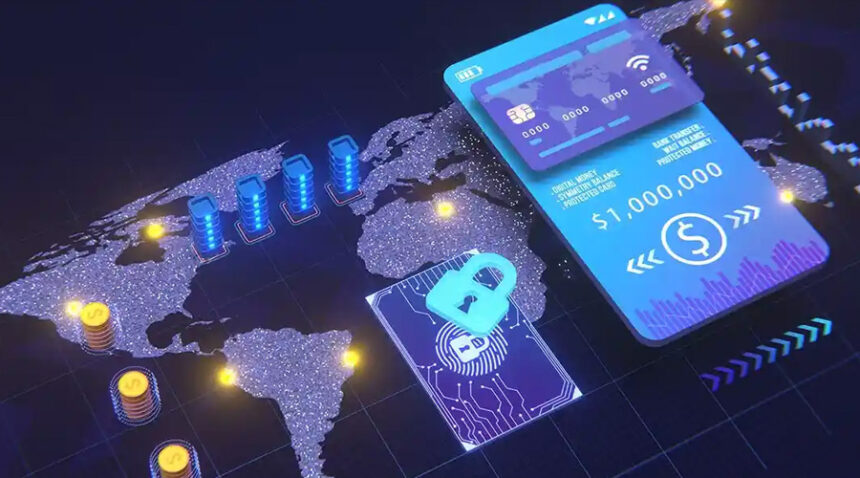Cross-border payments are a critical component of international trade, finance, and commerce. However, traditional methods of transferring money across borders are often plagued by inefficiencies, high costs, and delays. These challenges have long been a source of frustration for businesses and individuals alike. Enter blockchain technology, a revolutionary innovation that is transforming the way cross-border payments are conducted. By leveraging the decentralized, transparent, and secure nature of blockchain, this technology is poised to revolutionize the cross-border payments industry, offering faster, cheaper, and more secure transactions.
This article explores how blockchain is revolutionizing cross-border payments, the challenges it addresses, the benefits it offers, and the future implications for the global financial system.
The Traditional Cross-Border Payments Landscape
To understand the impact of blockchain on cross-border payments, it’s essential to first examine the traditional landscape. Historically, cross-border payments have relied on a complex network of intermediaries, including banks, clearinghouses, and correspondent banks. This system, known as the correspondent banking model, involves multiple steps and parties, each of which adds time and cost to the transaction.
Key challenges associated with traditional cross-border payments include:
- High Costs: Traditional cross-border transactions often incur significant fees, including currency conversion fees, intermediary fees, and service charges. These costs can add up, making it expensive for individuals and businesses to send money across borders.
- Slow Processing Times: Cross-border payments can take several days to complete due to the involvement of multiple intermediaries and the need for manual processing. Delays can be particularly problematic for businesses that rely on timely payments to manage cash flow and operations.
- Lack of Transparency: Traditional cross-border payment systems often lack transparency, making it difficult for senders and recipients to track the status of a transaction. This opacity can lead to uncertainty and disputes, particularly when large sums of money are involved.
- Limited Accessibility: In many parts of the world, access to traditional banking services is limited, making it difficult for individuals and businesses to participate in cross-border transactions. This lack of accessibility is a significant barrier to financial inclusion and economic development.
These challenges have created a demand for more efficient, cost-effective, and transparent solutions, needs that blockchain technology is uniquely positioned to address.
How Blockchain Works: A Brief Overview
Blockchain is a distributed ledger technology that allows for secure, transparent, and tamper-proof recording of transactions. Unlike traditional centralized systems, where a single entity controls the ledger, blockchain operates on a decentralized network of nodes (computers) that collectively maintain the ledger. Each transaction is recorded in a “block,” and these blocks are linked together in a “chain,” creating an immutable record of all transactions.
Key features of blockchain technology include:
- Decentralization: Blockchain operates on a decentralized network, eliminating the need for intermediaries and reducing the risk of single points of failure.
- Transparency: Transactions on a blockchain are visible to all participants in the network, providing a high level of transparency and trust.
- Security: Blockchain uses cryptographic techniques to secure transactions, making it highly resistant to fraud and tampering.
- Immutability: Once a transaction is recorded on a blockchain, it cannot be altered or deleted, ensuring the integrity of the data.
These features make blockchain an ideal solution for addressing the inefficiencies and challenges associated with traditional cross-border payments.
The Impact of Blockchain on Cross-Border Payments
Blockchain technology is revolutionizing cross-border payments in several key ways:
- Reducing Costs: One of the most significant advantages of blockchain technology in cross-border payments is its potential to drastically reduce costs. By eliminating the need for intermediaries, blockchain can significantly lower the fees associated with cross-border transactions. For example, traditional banking systems charge fees for currency conversion, intermediary services, and processing. In contrast, blockchain-based payment systems can execute transactions directly between parties, reducing or eliminating these costs.
Additionally, blockchain enables the use of cryptocurrencies for cross-border payments. Cryptocurrencies like Bitcoin, Ethereum, and stablecoins can be transferred across borders without the need for currency conversion, further reducing costs. For businesses that frequently engage in international trade, these cost savings can be substantial, improving profitability and competitiveness. - Speeding Up Transactions: Traditional cross-border payments can take several days to process, particularly when transactions involve multiple currencies or jurisdictions. Blockchain technology addresses this issue by enabling near-instantaneous settlement of transactions. Since blockchain operates on a decentralized network, transactions are processed in real-time, without the need for intermediaries to verify and clear payments.
For example, Ripple, a blockchain-based payment protocol, allows for cross-border transactions to be settled in seconds, compared to the several days required by traditional banking systems. This speed is particularly beneficial for businesses that need to manage cash flow efficiently or individuals who need to send money to family members in other countries quickly. - Enhancing Transparency: Transparency is a critical issue in traditional cross-border payments, where tracking the status of a transaction can be challenging. Blockchain technology addresses this challenge by providing a transparent and immutable ledger of all transactions. Every participant in the blockchain network has access to the same information, allowing them to track the progress of payment in real-time.
This transparency reduces the risk of disputes and fraud, as all parties involved can verify the transaction’s details and status. For businesses, this level of transparency can improve trust with partners and suppliers, as well as enhance compliance with regulatory requirements. - Improving Security: Security is a paramount concern in cross-border payments, where the risk of fraud and cyberattacks is high. Blockchain technology offers a robust solution to these security challenges. The decentralized nature of blockchain, combined with advanced cryptographic techniques, makes it highly resistant to hacking and fraud.
Each transaction on a blockchain is encrypted and linked to the previous transaction, creating a chain of blocks that cannot be altered or tampered with. This immutability ensures the integrity of the transaction data and provides a high level of security for cross-border payments. Additionally, the use of smart contracts—self-executing contracts with the terms of the agreement directly written into code, can automate and enforce payment conditions, further enhancing security. - Enabling Financial Inclusion: One of the most transformative aspects of blockchain technology is its potential to promote financial inclusion, particularly in developing countries. Traditional banking systems often exclude large segments of the population due to the high costs of maintaining accounts, limited access to banking infrastructure, and strict regulatory requirements.
Blockchain technology enables individuals and businesses in underserved regions to participate in the global economy by providing access to digital payment systems. With a smartphone and an internet connection, individuals can send and receive cross-border payments without the need for a traditional bank account. This capability can empower millions of people who are currently excluded from the financial system, promoting economic development and reducing poverty. - Facilitating Cross-Border Trade: Cross-border trade is a vital component of the global economy, but it is often hampered by the inefficiencies of traditional payment systems. Blockchain technology can streamline the process of cross-border trade by providing a secure, transparent, and efficient payment mechanism.
For example, blockchain can be used to create digital trade finance platforms that enable businesses to conduct cross-border transactions with greater speed and security. These platforms can automate the entire trade finance process, from issuing letters of credit to settling payments, reducing the time and costs associated with international trade. This efficiency can make cross-border trade more accessible to small and medium-sized enterprises (SMEs), which often face significant barriers to entering the global market. - Reducing Currency Volatility: Currency volatility is a significant challenge in cross-border payments, particularly for businesses that operate in multiple countries. Fluctuations in exchange rates can result in unexpected costs and financial losses. Blockchain technology offers a solution to this problem through the use of stablecoins, cryptocurrencies that are pegged to a stable asset, such as the US dollar or gold.
Stablecoins provide a reliable means of transferring value across borders without the risk of currency fluctuations. By using stablecoins for cross-border payments, businesses can reduce their exposure to currency risk and ensure that they receive the expected amount of funds. This stability can be particularly beneficial for businesses that operate in volatile markets or engage in frequent cross-border transactions.
Case Studies: Blockchain in Action
Several blockchain-based platforms and projects are already making significant strides in revolutionizing cross-border payments. Here are a few examples:
- Ripple: Ripple is one of the most well-known blockchain platforms focused on cross-border payments. Its RippleNet network enables financial institutions to send and receive cross-border payments in real time, with lower costs and greater transparency compared to traditional systems. Ripple’s digital asset, XRP, is used as a bridge currency to facilitate instant settlement and reduce the need for pre-funded nostro accounts.
Ripple’s technology has been adopted by numerous banks and financial institutions worldwide, demonstrating its potential to transform the cross-border payments industry. By leveraging blockchain technology, Ripple aims to create a global payment network that is faster, cheaper, and more efficient than the existing correspondent banking system. - Stellar: Stellar is another blockchain platform that is making significant inroads in the cross-border payments space. The Stellar network allows for the transfer of any type of currency, including fiat and digital currencies, across borders. Stellar’s consensus protocol enables fast and secure transactions, with settlement times as low as five seconds.
Stellar has partnered with several financial institutions and organizations to facilitate cross-border payments, particularly in developing regions. The platform’s focus on financial inclusion and low transaction costs makes it an attractive option for remittances and small-scale cross-border transactions. - IBM World Wire: IBM World Wire is a blockchain-based payment network built on the Stellar protocol. It enables financial institutions to settle cross-border payments in real time using digital assets as a bridge currency. World Wire eliminates the need for intermediaries, reducing the time and cost associated with cross-border transactions.
IBM has partnered with several central banks and financial institutions to pilot the World Wire network in various regions. The platform’s ability to settle payments in multiple currencies and its focus on compliance with regulatory standards make it a promising solution for cross-border payments. - BitPesa: BitPesa is a blockchain-based payment platform that focuses on facilitating cross-border payments in Africa. The platform allows businesses and individuals to send and receive payments in local currencies using Bitcoin and other digital assets as a medium of exchange. BitPesa’s technology reduces the costs and delays associated with traditional remittance services, making it easier for individuals and businesses to participate in the global economy.
By leveraging blockchain technology, BitPesa is helping to bridge the gap between Africa and the rest of the world, promoting financial inclusion and economic development in the region.
The Future of Blockchain in Cross-Border Payments
As blockchain technology continues to evolve, its impact on cross-border payments is expected to grow. Several trends and developments are likely to shape the future of blockchain in this space:
- Increased Adoption by Financial Institutions: As more financial institutions recognize the benefits of blockchain technology, adoption is likely to increase. Banks, payment processors, and other financial institutions are exploring blockchain as a means to improve the efficiency, security, and transparency of cross-border payments. This trend is expected to accelerate as the technology matures and regulatory frameworks become clearer.
- Integration with Traditional Payment Systems: Blockchain technology is likely to become increasingly integrated with traditional payment systems. Hybrid solutions that combine the benefits of blockchain with the reliability and familiarity of existing payment infrastructure could emerge as a dominant model for cross-border payments. This integration would enable businesses and consumers to benefit from the advantages of blockchain without having to completely overhaul their payment systems.
- Regulatory Developments: Regulatory frameworks for blockchain and cryptocurrencies are still evolving, and their development will play a crucial role in the adoption of blockchain-based cross-border payment solutions. Governments and regulatory bodies are likely to continue working on guidelines and standards that address issues such as anti-money laundering (AML), know-your-customer (KYC), and consumer protection. Clearer regulations will provide greater certainty for businesses and financial institutions, encouraging further adoption of blockchain technology.
- Innovation in Digital Assets: The development of new digital assets, including stablecoins and central bank digital currencies (CBDCs), will have a significant impact on cross-border payments. These digital assets offer the potential for faster, cheaper, and more stable cross-border transactions, further enhancing the capabilities of blockchain-based payment systems. The adoption of CBDCs by central banks could also lead to the creation of new cross-border payment networks that leverage blockchain technology.
- Expansion of Financial Inclusion: Blockchain technology has the potential to expand financial inclusion by providing access to cross-border payment services for underserved populations. As blockchain-based platforms continue to develop and become more accessible, individuals and businesses in developing regions will have greater opportunities to participate in the global economy. This expansion of financial inclusion could have a profound impact on poverty reduction and economic development worldwide.
Blockchain technology is revolutionizing the cross-border payments industry by addressing the challenges of high costs, slow processing times, lack of transparency, and limited accessibility associated with traditional payment systems. By leveraging the decentralized, transparent, and secure nature of blockchain, businesses and individuals can conduct cross-border transactions more efficiently, securely, and cost-effectively.
As blockchain continues to evolve and gain adoption, its impact on cross-border payments is expected to grow, with significant implications for the global financial system. The technology’s potential to enhance financial inclusion, streamline cross-border trade, and reduce currency volatility positions it as a key driver of innovation in the payments industry.
The future of cross-border payments lies in the continued integration and development of blockchain technology, paving the way for a more connected, inclusive, and efficient global economy.








